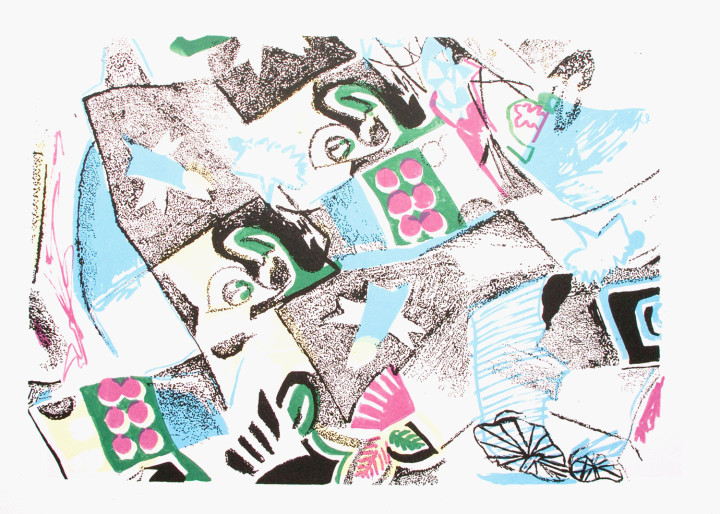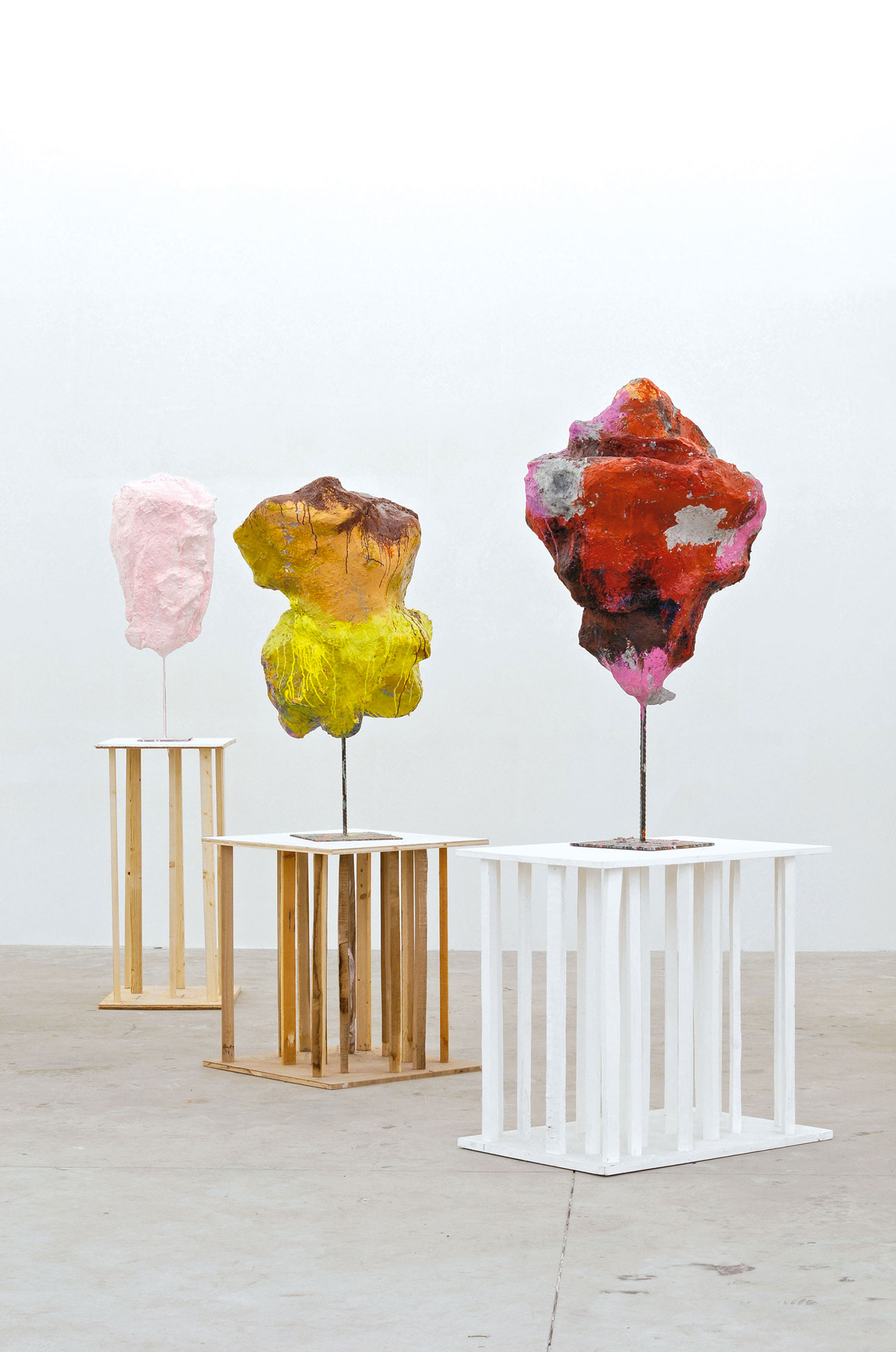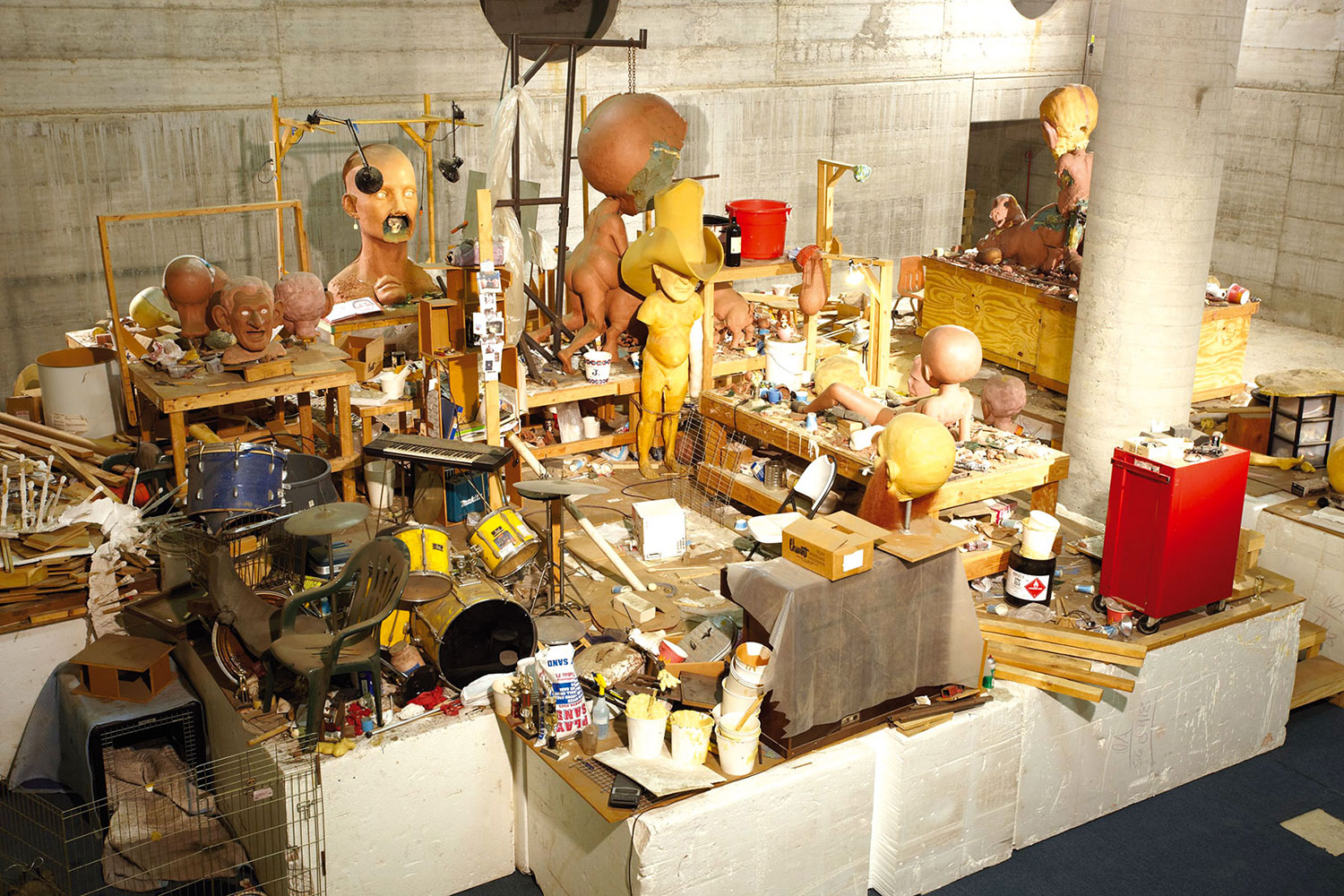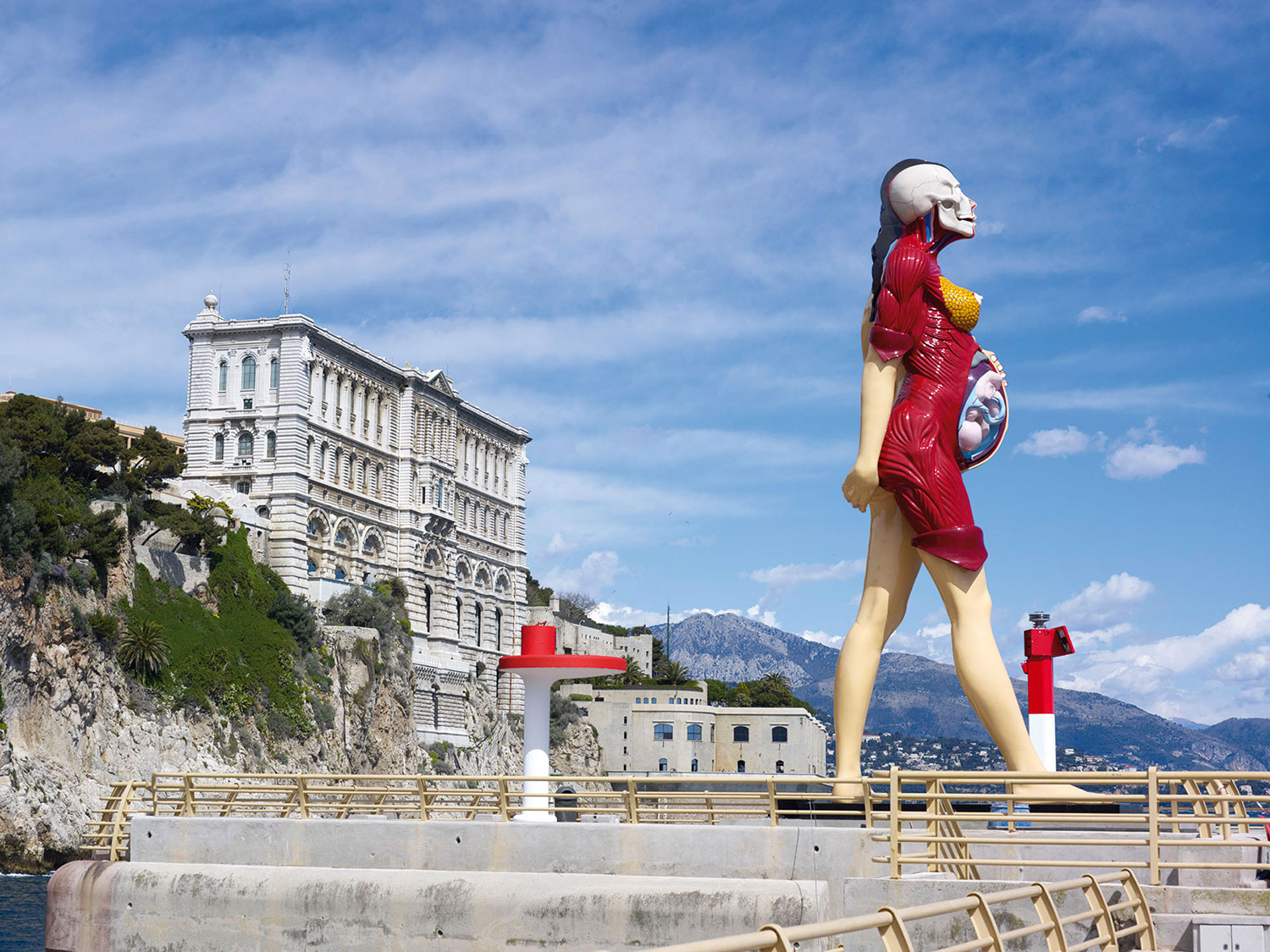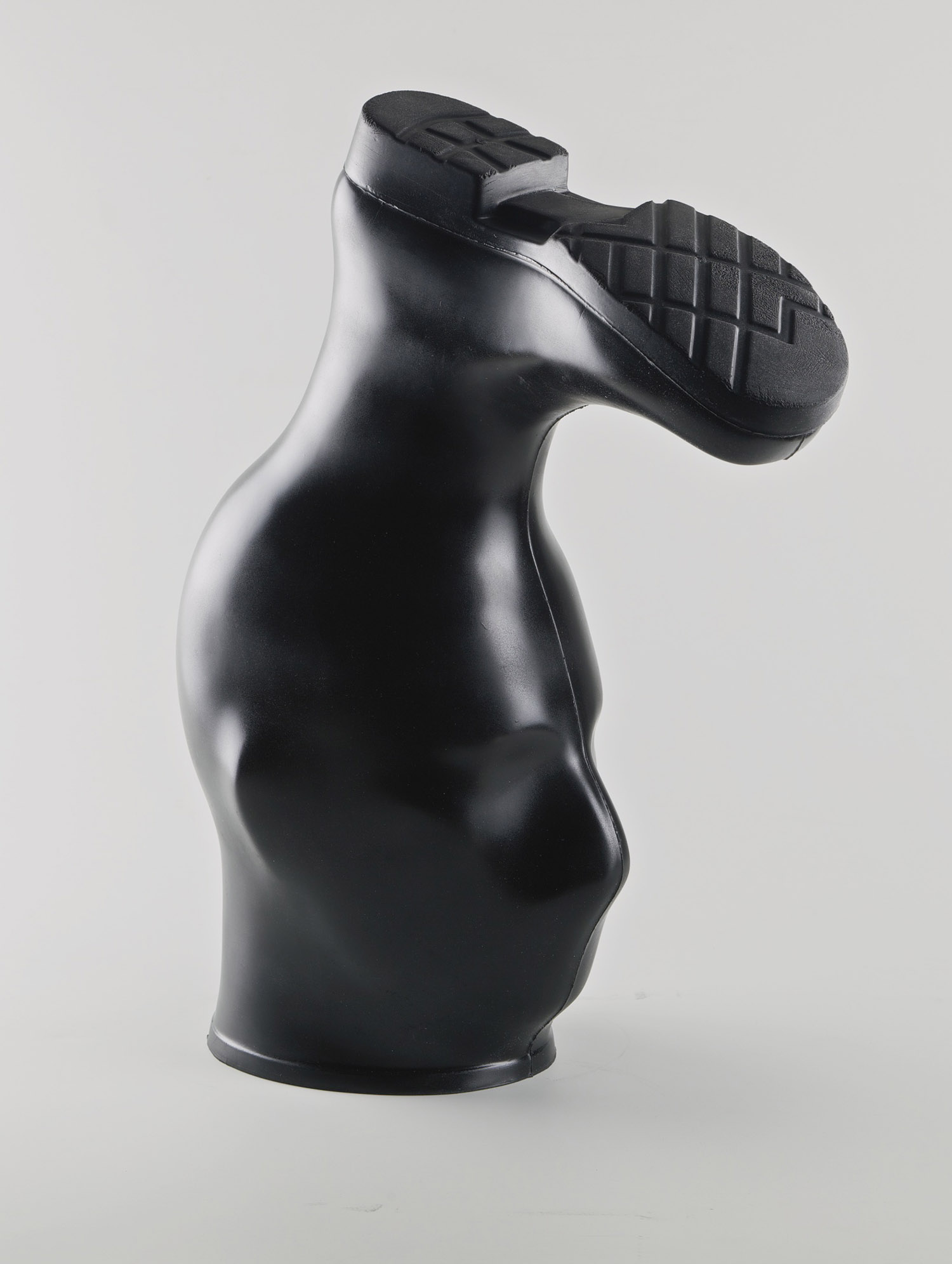
Will Benedict: In your works you seem to be creating a confluence between graphics and sculpture. How did a silkscreen of a couch pattern get rolled up and stuffed into the top of a CD display tower?
Verena Dengler: I started using CD racks because they seem like the ideal object to poke fun at a kind of display art: a display of knowledge and information. The futile function of this object made me think about visibility and materiality of information nowadays. To us, it seems strange that not long ago you would have a huge metal phallus standing in your living room, taking up a lot of space but carrying only maybe 50 CDs at best. Maybe intellectuals don’t have CD racks because such an overt display might seem vulgar. If you look at the mass of data that we are constantly downloading, 50 CDs seem ridiculous. You download music all by yourself. What happens to all the little things (going to a shop, peeling off the sticker, looking at the booklet) if you just have the ‘essence’? People who looked at my sculptures didn’t recognize the CD rack as such. I like the thought of it being an archaeological find in some thousand years and being taken for a ritualistic object. Who knows? Maybe Stonehenge is just a giant rack for enormous data files. Silkscreen prints get by in art as a by-product. Of course, I want to change that.
WB: Is printing still seen as a by-product even after Warhol or Thomas Bayrle or more contemporary examples like Willem Oorebeek, Charline von Heyl or Marc Camille Chaimowicz?
VD: In terms of the price, yes.

WB: Does your desire ‘to change’ the perception of the status of printing just have to do with its price?
VD: It’s the perception of what is an original. The technique makes you think of a machine, but my prints are hand printed by myself. They are never the same, but you can hardly tell what the ‘mistakes’ are. There is a social dimension in reproduction; I can give prints to my friends or exchange artworks. Friedensreich Hundertwasser did editions of 10,000 where he worked out color combinations which made every print an original. Quite conceptual, no?
WB: I’m a bit confused about your use of the term reproduction. That word is usually reserved for the notion of documentation, as in a magazine or catalogue. And why do you find this series of Hundertwasser’s so conceptual?
VD: The German word Vervielfältigung has a more precise meaning than the English ‘reproduction.’ In English it could mean print graphics like etchings, photographs or also as biological reproduction — as far as I understand it. So, when the commodity value is dependent on the level of originality, I am interested in the scope of the edition as a means of dispersion. How many prints are there? And how many identities can one person have? I think this is my main connection. I think of successful demonstrations or uprisings where there is not one spokesperson but a dissipated mass, a bit like terrorism. I think this Hundertwasser edition is an interesting attempt to question the status of print graphics, no matter what’s on it. Here I am mainly interested in the concept of playing with the logic of the commodity value.

